Saddle Road Improvements Safely Connect Hawaiian Communities
BY AsphaltPro Staff
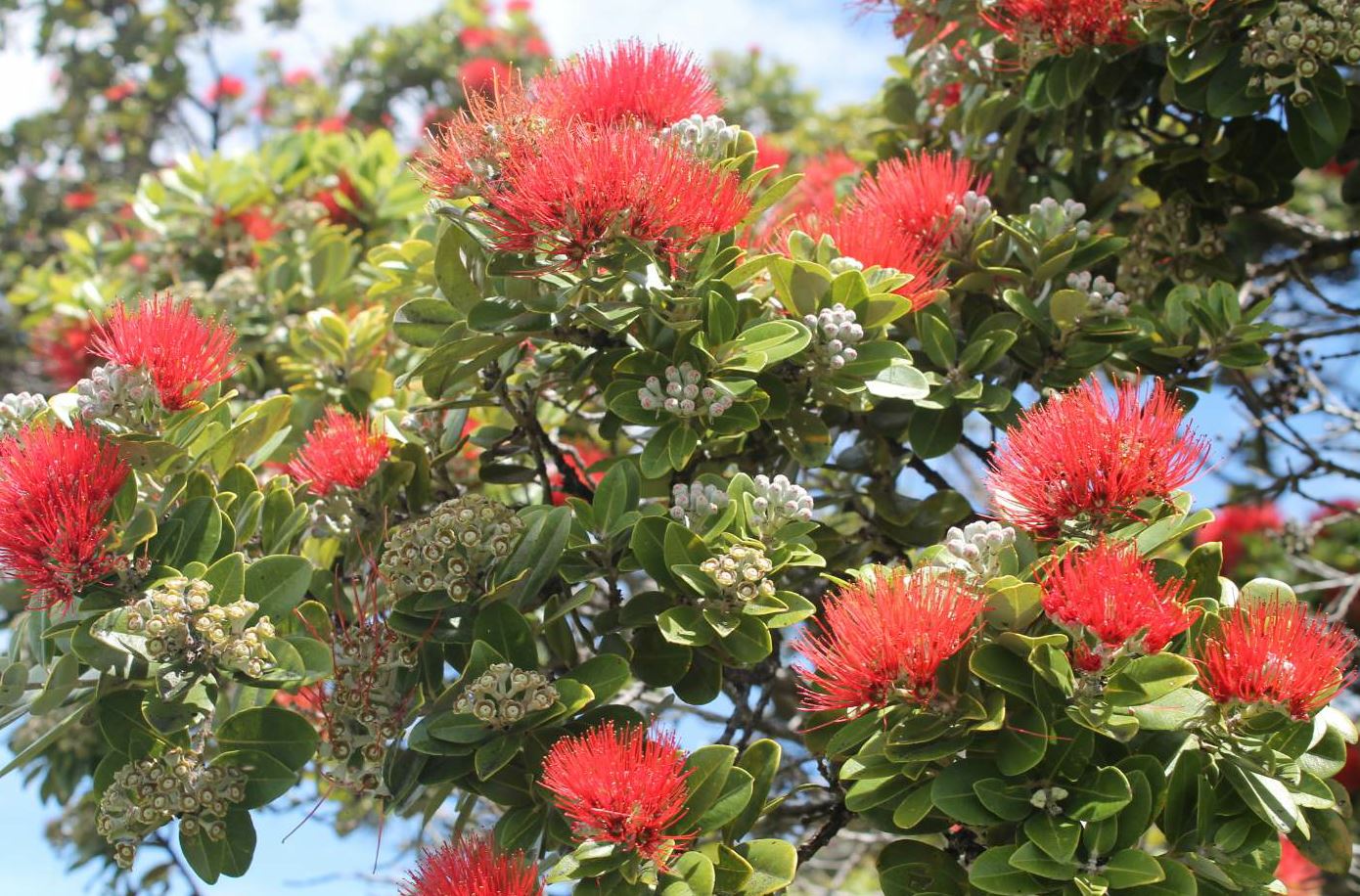
The Daniel K. Inouye Highway (DKI), also known as Saddle Road, spans nearly the entire width of Hawaii Island, from Hilo on the east coast to Route 190 south of Waimea, located less than 10 miles from the island’s west coast. When it was first built in 1942, the one-lane thoroughfare’s main job was to connect the Pohakuloa Army base—located in the center of the island—with both coasts.
It was considered one of the most dangerous paved roads in the state of Hawaii, with its one-lane bridges, areas of poorly maintained pavement and tight corners. The road was considered so dangerous, in fact, that rental car companies prohibited the use of their cars on Saddle Road.
“The old Saddle was treacherous,” Walter Kunitake, chairman of the Saddle Road task force, told the Hawaii Tribune-Herald. “On a foggy night it was more than treacherous.”
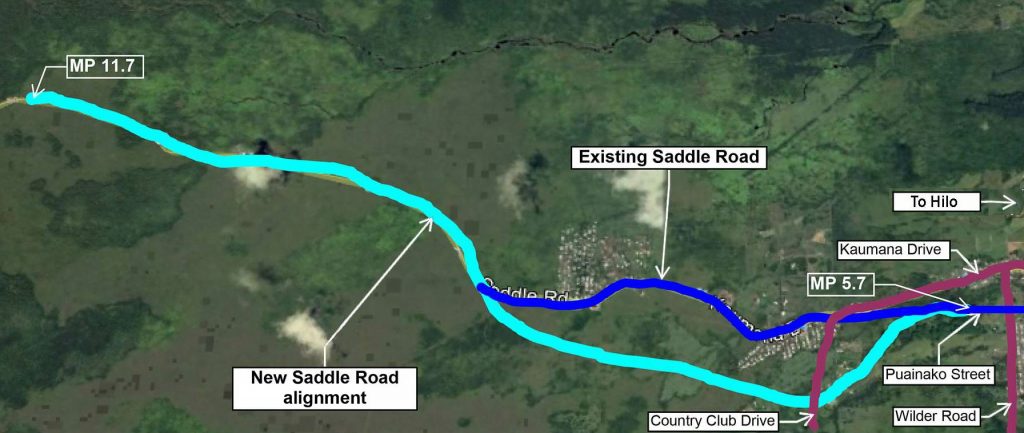
The $57 million, 6-mile project consisted of a horizontal alignment from milepost 11.7 to milepost 8.5, then diverged south of the existing road until connecting with Puainako Street Extension at milepost 5.7.
That’s what makes the completion of Saddle Road’s east side alignment not only a triumph over the unique paving challenges the project presented, but also a triumph of efficiency, connectivity and safety for the residents of the Big Island.
With its recent improvements, Saddle Road is the most direct cross-island route and is used for transporting goods, military traffic, recreation and tourism, as well as daily commuting. It also offers the only paved access to the U.S. Department of the Army’s Pohakuloa Training Area, Mauna Kea State Park, and the Muana Kea and Muana Loa observatories.
According to the Federal Highway Administration (FHWA), public use of Saddle Road had been very low prior to the improvements. Now, cross-island travelers can save between 30 and 45 minutes, compared to the most commonly used alternative routes.
The improvements have also increased the number of daily cars using that route by 250 percent and decreased accidents by 80 percent since 2012, according to the Hawaii Tribune-Herald.
In total, the project spanned 48 miles and cost $316.5 million.
“[The completion of the final phase] fulfills the late Senator [Daniel] Inouye’s vision of a safe, efficient route across the largest island in our state,” said Hawaii Governor David Ige at the final phase’s dedication ceremony in October of 2017.

Finish the Final Phase
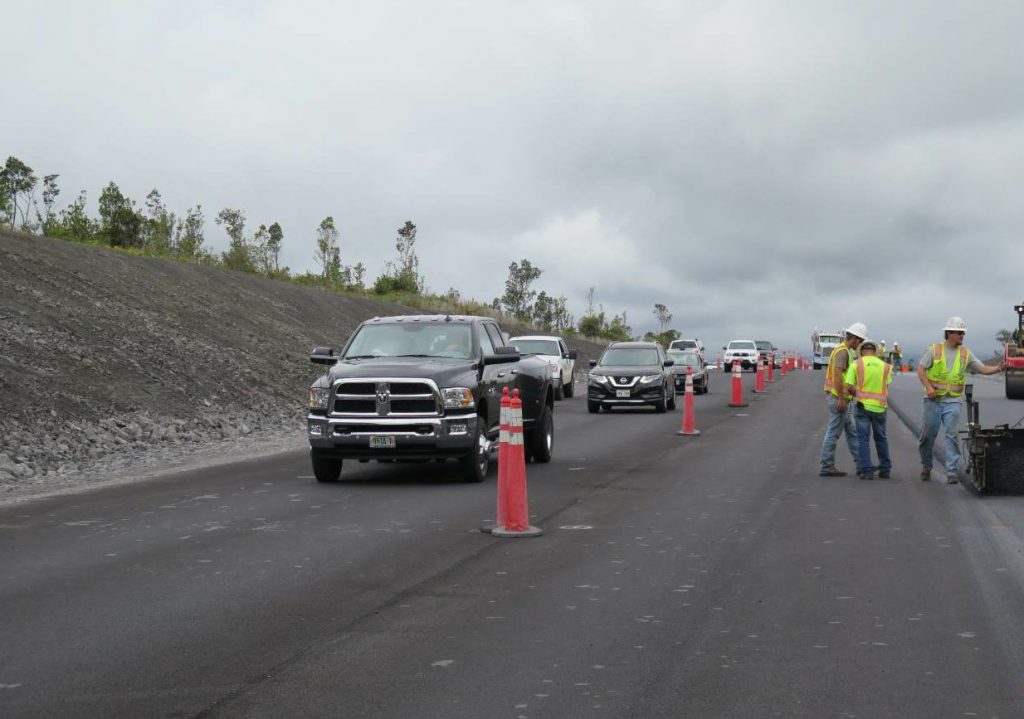
For the first half of the project, the RHB crew contended with the traveling public. However, the second half of the project was a new road south of the existing roadway. Since improvements began, Saddle Road has seen a 250 percent increase in traffic.
Saddle Road’s east side realignment—the final phase of the multi-year project—began in March of 2016 and was completed in September of 2017.
FHWA and the Central Federal Lands Highway Division, in cooperation with Hawaii DOT, oversaw the project, with funding from the federal government, the state DOT and the U.S. Army.
Performed by Hawaii Asphalt Paving Industry member, Road and Highway Builders LLC (RHB), the final phase cost $57 million and spanned 6 miles, from milepost 11.7 to milepost 5.7. It included a horizontal alignment from milepost 11.7 to milepost 8.5, and then diverged south of the existing road until connecting with Puainako Street Extension at milepost 5.7.

The improvements upgraded the road to include two 12-foot travel lanes, each with an 8-foot shoulder, and a climbing lane for most of the project length. To achieve this 52-foot wide roadway, RHB performed a series of pulls with its Cat AP1000E paver. The first was 20 feet wide, the second 12 feet, the final 20 feet.
The roadway consisted of a 5-inch thick asphalt pavement, paved in two lifts: a 3-inch bottom lift of Marshall mix (36,000 tons total) and a 2-inch top lift of Superpave (24,000 tons total).
To produce the asphalt, a portable plant was brought to the island and placed at Pohakuloa Training Area (PTA) quarry, where the aggregates for the pavement were crushed. Oahu-based Asphalt Hawaii and PAR Hawaii supplied the specified PG64-22 asphalt binder for the project.
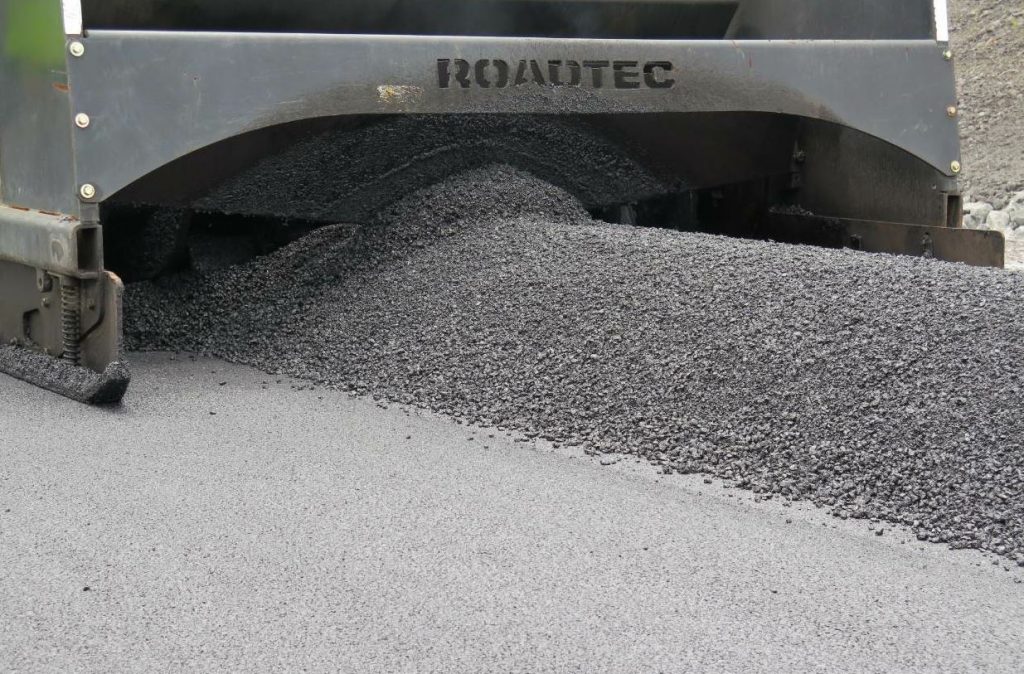
To expedite dump times, RHB chose to use belly dumps and a Roadtec Shuttle Buggy, which is uncommon in Hawaii, due to frequent intersections and driveways on most roads.
Having completed projects on the Hawaiian Islands before, the team at RHB was prepared to procure and transport materials to complete the paving on this project,”
To expedite dump times, RHB chose to use belly dumps and a Roadtec Shuttle Buggy.
However, belly dumps are relatively uncommon in the state of Hawaii, as most roads have intersections and driveways at such frequent intervals, it’s often impractical to use a belly dump that could leave a windrow of asphalt material in an inconvenient spot. This road, however, had only a few minor access roads and no driveways
Schedule for Success
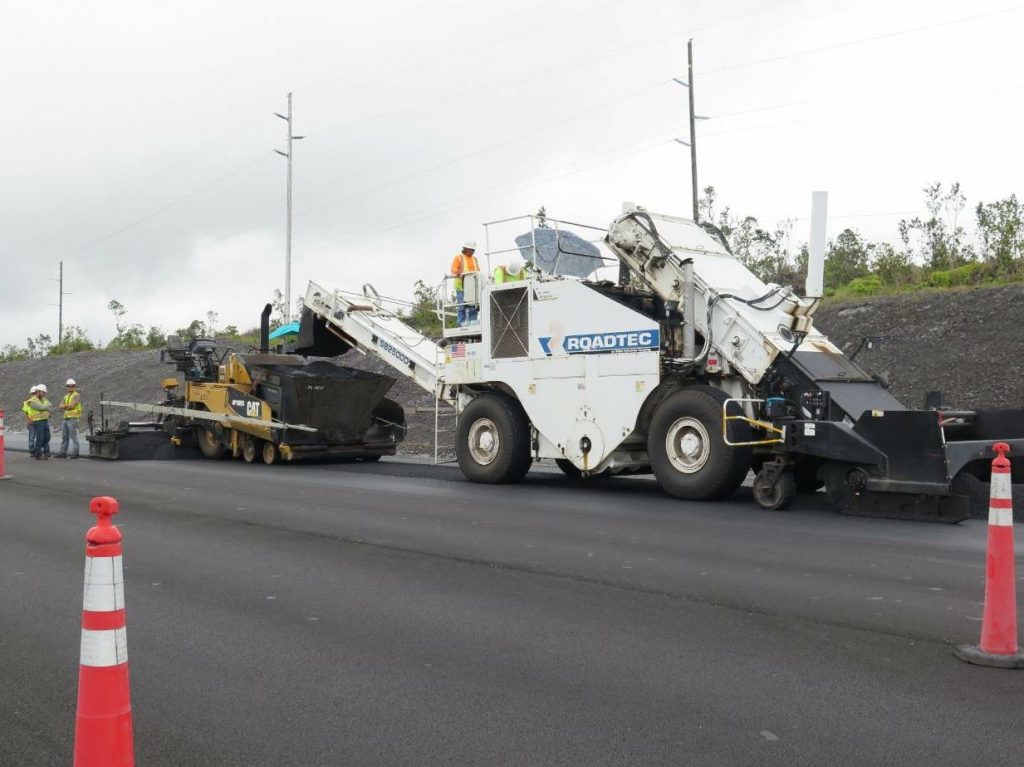
To expedite dump times, RHB chose to use belly dumps and a Roadtec Shuttle Buggy, which is uncommon in Hawaii, due to frequent intersections and driveways on most roads.
The first in a series of unique challenges this project faced was its distance from the asphalt plant, located at milepost 38 around 30 miles from the work zone.
This distance required a larger number of trucks to bring mix to the job. This made scheduling paramount, not only to meet the trucking needs of the project but also to minimize negative effects on traveling public.
Scheduling was also important in dealing with persistent rain. The crew experienced multiple rainout days—once a week, on average.
However, the crew would monitor weather forecasts to plan its operations. For example, if it was going to rain at 7 a.m. and clear up by 9 a.m., they would start operations at 9 a.m. However, they also had to monitor weather conditions beyond their immediate work site.
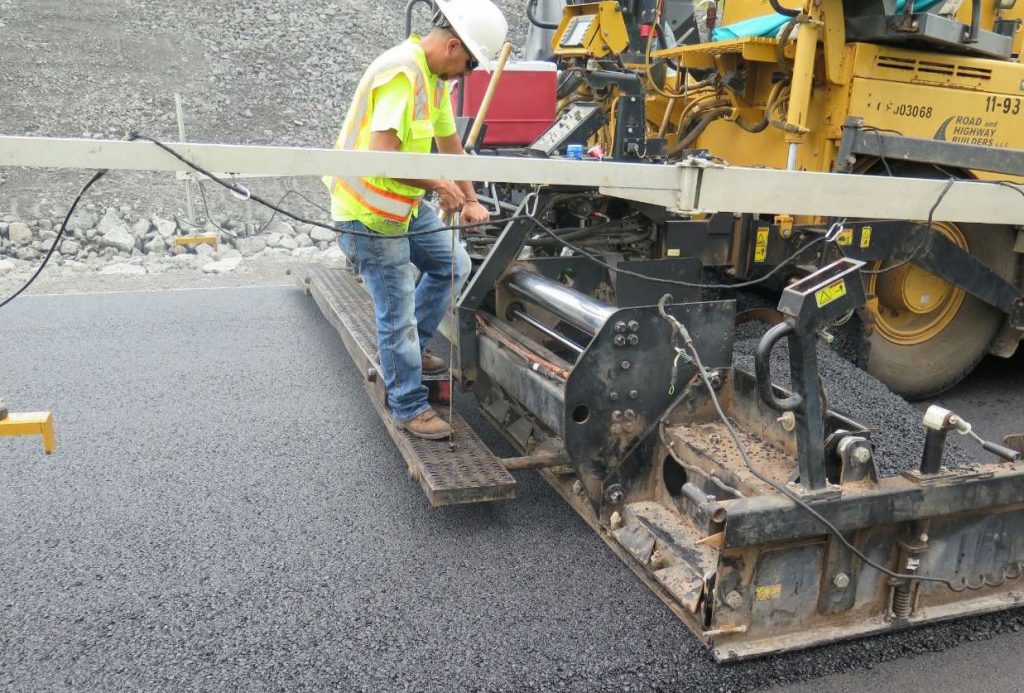
The east side alignment consisted of a 5-inch asphalt pavement, including a 3-inch lift of Marshall mix and a 2-inch top lift of Superpave.
One major concern was rain occurring above the area they were paving. This would cause unexpected flooding. Care had to be taken to not only monitor the area that were paving but other areas that would have an impact on their paving.
Despite planning for rain, the crew was forced to stop paving due to unexpected rain on multiple occasions. When this would happen, they would have alternate plans so the workforce could keep moving forward until weather would improve and the crew could resume paving.
Overcome Site Situations
Other unique challenges included ash-related issues and paving on steep grades, as well as mitigating the spread of Rapid ōhiʻa Death (ROD), a disease affecting trees in the area.

Saddle Road passes between the island’s two largest mountains, Mauna Loa (13,680 feet) and Mauna Kea (13,796 feet). Due to this location, about three quarters of the last stretch is steeper than 5 percent, with the steepest grade exceeding 7 percent.
The RHB crew decided the best way to tackle the steep grades of this project was to pave downhill to decrease the chance of equipment not be able to pull the hill and getting struck. Also, dumping trucks downhill and paving downhill with rubber tired machines decreases the chances of the equipment/truck spinning its tires on the road base or new pavement.
This also minimizes the chance of the screed moving side to side or vertically from spinning tires.
Another benefit of paving downhill was that they were paving away from the asphalt plant. This meant loaded haul trucks didn’t have to turn around and potentially damage the subgrade, base or asphalt paving.
The crew also took care when rolling the material on steep grades, only vibrating when rolling up the hill and not down, with its Dynapac rubber tire roller and two Cat double steel drum rollers.

The crew also had to take great care paving over some of the materials on site, including basalt, pahoehoe and volcanic ash.
All embankment material was balanced from excavation on site. For example, all ash material was used to flatten embankment slopes to eliminate any material from leaving the site.
In fact, much of the project was constructed over ash. Soft spots are a common problem with ash materials and ultimately lead to pavement failures if not addressed in construction. So, the crew excavated the ash, placed geogrid and fabric over the excavated material, and then placed and compacted a 6-inch minus material in 6-inch lifts. “The construction of these platforms greatly improved the performance of the subgrade material and made paving operations considerably easier to construct, mainly due to 100 percent reduction in soft spots.”
However, great care had to be taken when constructing the platforms over ash, including following proper construction techniques to minimize the ash contaminating the platform. If a platform became contaminated then it was removed and the process started again.
Another unique challenge on the jobsite was containing ROD, a disease caused by two strains of the Ceratocystis fungus that attacks the vascular system of ōhiʻa trees, which make up roughly 50 percent of Hawaii’s native forests and watershed. The disease can be easily spread by contact with infected trees, with about 75,000 acres of ōhiʻa forests currently showing symptoms of ROD disease on Hawaii Island, according to recent and ongoing aerial surveys. The newly discovered disease has no cure, but so far has only affected Hawaii Island. In August of 2015, the Hawaii Board of Agriculture approved an emergency quarantine on interstate movement of ōhiʻa products.
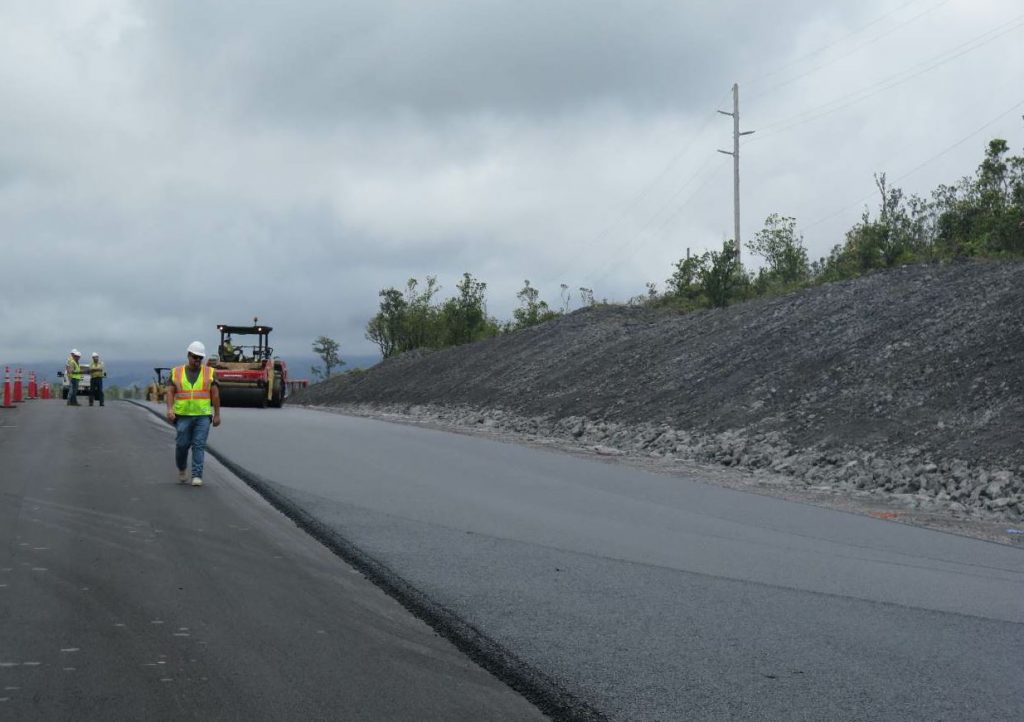
In total, the job required 36,000 tons of Marshall mix and 24,000 tons of Superpave. The crew paved the steep project downhill to minimize the chances of equipment getting stuck. This also let them pave “away” from the plant so loaded trucks didn’t have to turn around on the subgrade or base course.
In the startup phase of the project, ROD was believed to be on the project site, so all tires and vehicle under carriages were washed to remove any fungus. Personnel made sure to clean gear before leaving the project site by brushing off tools and shoes, and then spraying them with a solution containing 70 percent rubbing alcohol.
The 120 acres of ōhiʻa trees cut down along the job site were ground and chipped, and the chippings were placed on the dirt shoulders of the project to contain any possible ROD to the project site and avoid spreading it around the island.
Success Despite Setbacks
Despite numerous challenges, the east side alignment was completed nearly on-time and within its budget, with a dedication ceremony taking place Oct. 10, 2017.
The hard work of RHB’s crew resulted in a smooth ride exceeding expectations, with only minimal areas of localized roughness.
Now—just as the late Senator Daniel K. Inouye envisioned—Saddle Road can safely connect the communities of east and west Hawaii.
